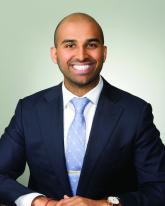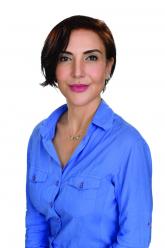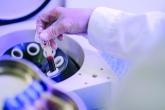Doug Brunk is a San Diego-based award-winning reporter who began covering health care in 1991. Before joining the company, he wrote for the health sciences division of Columbia University and was an associate editor at Contemporary Long Term Care magazine when it won a Jesse H. Neal Award. His work has been syndicated by the Los Angeles Times and he is the author of two books related to the University of Kentucky Wildcats men's basketball program. Doug has a master’s degree in magazine journalism from the S.I. Newhouse School of Public Communications at Syracuse University. Follow him on Twitter @dougbrunk.
News

What does it take for men to embrace cosmetic treatments?
- Author:
- Doug Brunk
“Millennials are interested in how they look and how to keep their aesthetic the best it can possibly be,” so there may be “a generational aspect...
News

How do patients perceive aesthetic providers on social media?
- Author:
- Doug Brunk
The three most common social media platforms used were Facebook (70%), Instagram (65%), and YouTube (63%).
News
Understanding of capillary malformation characteristics continue to evolve
- Author:
- Doug Brunk
Genetic variants are found within capillary malformations, and they tend to be associated with three major pathways.
News

Combining treatment options for scar revision often a useful approach
- Author:
- Doug Brunk
Mounting evidence suggests that the sooner you start treating scars after they form, the better.
News

Study addresses whether cosmetic treatments make patients happier
- Author:
- Doug Brunk
“We set out to assess: Are patients who seek cosmetic procedures happy at baseline? And, do cosmetic procedures make us happier or more satisfied...
News

Anatomic site influences ropivacaine duration during dermatologic surgery
- Author:
- Doug Brunk
“This emphasizes a gap in effective pain control, but also an opportunity to improve our patients’ surgical and recovery experiences,” Dr. Kira...
News

First-in-class device for facial wrinkles, tightening hits the market
- Author:
- Doug Brunk
“In my experience it especially helps with jawline definition, the lower medial cheek excess skin, and accordion lines in that area,” Dr. Mathew...
News

Ready or not, hands-free devices are coming
- Author:
- Doug Brunk
“The next generation of lasers and energy devices are going to be coming into our offices, so we should think carefully about how to incorporate...
News

Novel stepwise method found to benefit patients with severe rhinophyma
- Author:
- Doug Brunk
“We found that our method has been efficacious but most often, and more importantly, leads to an improvement in the patient’s quality of life,” Dr...
News

Combination of energy-based treatments found to improve Becker’s nevi
- Author:
- Doug Brunk
The study is the largest known case series of therapy combining 1,550-nm nonablative fractional resurfacing for patients with Becker’s nevus with...
News

How do patients with chronic urticaria fare during pregnancy?
- Author:
- Doug Brunk
“Overall, these findings suggest that patients should continue their treatments using an individualized dose to provide optimal symptom control,”...
News

Blindness from PRP injections a rare but potentially devastating side effect
- Author:
- Doug Brunk
“We should take the same precautions when injecting PRP on the face as we do when injecting fillers,” Dr. Sean Wu advised.
News
‘Low and Slow’ hyperthermic treatment being evaluated for superficial and nodular BCCs
- Author:
- Doug Brunk
“It’s a gentler process that allows patients an alternative to second intention wounds that occur after electrodessication and curettage or Mohs...
News

Liquid injectable silicone safe for acne scarring in dark-skinned patients, study finds
- Author:
- Doug Brunk
“Among the most impressive findings of our study was the permanence of effectiveness of LIS for acne scarring in patients who had treatment over a...
News

Noninvasive combination procedure effective for upper arm fat reduction, muscle toning
- Author:
- Doug Brunk
For the 25 patients who completed their 3-month follow-up visit, analysis of MRI images showed a 25.5% average decrease in fat tissue.
